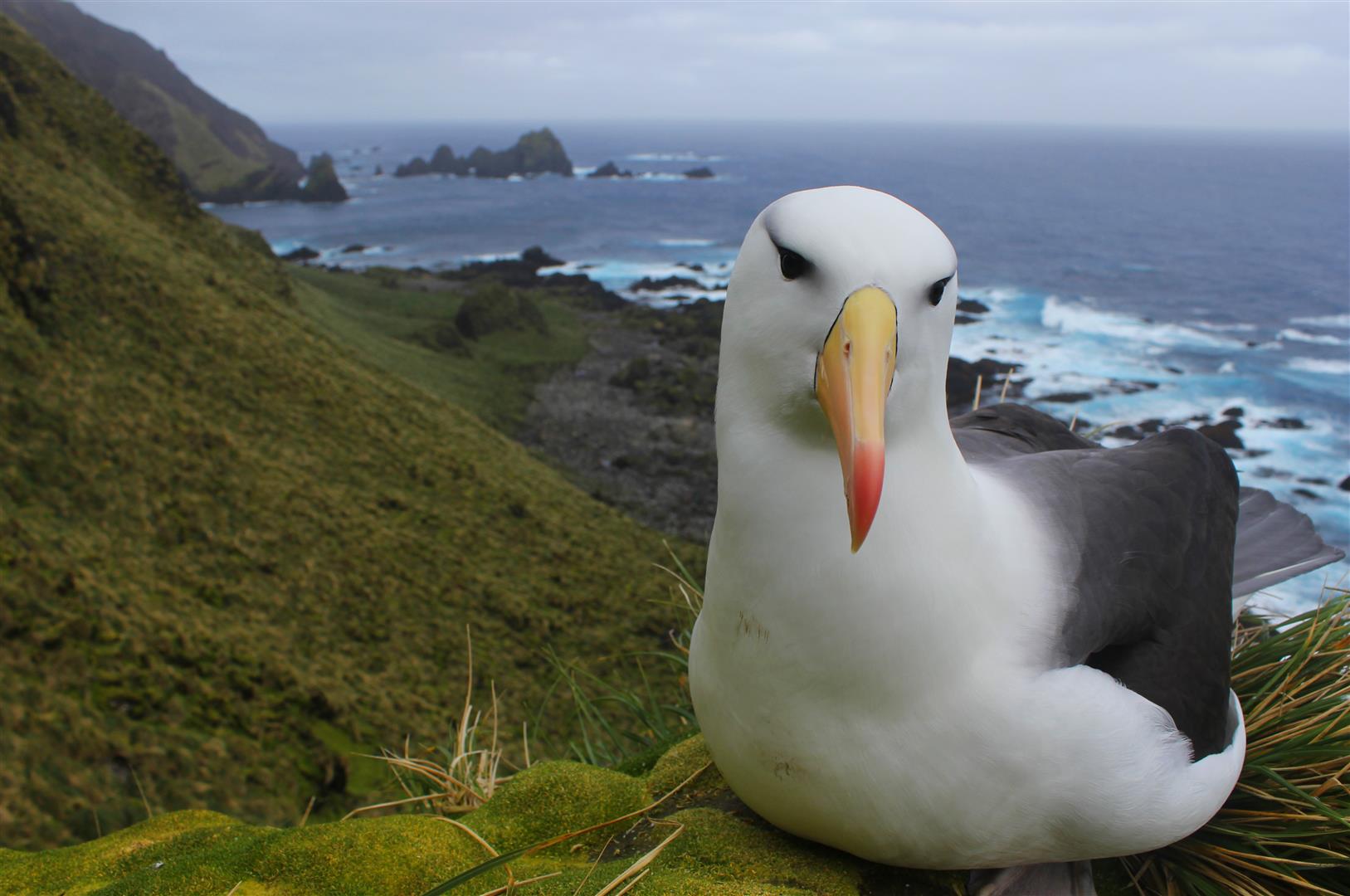
Black-browed Albatross, Macquarie Island, photograph by Melanie Wells
Jaimie Cleeland (Institute for Marine and Antarctic Studies, University of Tasmania, Hobart, Australia) and colleagues have published open access in the journal Frontiers in Marine Science on threats facing Black-browed Thalassarche melanophris, Grey-headed T. chrysostoma, Light-mantled Phoebetria palpebrata and Wandering Diomedea exulans Albatrosses breeding on Australia’s sub-Antarctic Macquarie Island.
The paper’s abstract follows:
“Climate change, fisheries and invasive species represent three pervasive threats to seabirds, globally. Understanding the relative influence and compounding nature of marine and terrestrial threats on the demography of seabird communities is vital for evidence-based conservation. Using 20 years of capture-mark-recapture data from four sympatric species of albatross (black-browed Thalassarche melanophris, grayheaded T. chrysostoma, light-mantled Phoebetria palpebrata and wandering Diomedea exulans) at subantarctic Macquarie Island, we quantified the temporal variability in survival, breeding probability and success. In three species (excluding the wandering albatross because of their small population), we also assessed the influence of fisheries, oceanographic and terrestrial change on these rates. The Southern Annular Mode (SAM) explained 20.87–29.38% of the temporal variability in survival in all three species and 22.72–28.60% in breeding success for black-browed and gray-headed albatross, with positive SAM events related to higher success. The El Niño Southern Oscillation (ENSO) Index explained 21.14–44.04% of the variability in survival, with higher survival rates following La Niña events. For black-browed albatrosses, effort in south-west Atlantic longline fisheries had a negative relationship with survival and explained 22.75–32.21% of the variability. Whereas increased effort in New Zealand trawl fisheries were related to increases in survival, explaining 21.26–28.29 % of variability. The inclusion of terrestrial covariates, reflecting extreme rainfall events and rabbit-driven habitat degradation, explained greater variability in trends breeding probability than oceanographic or fisheries covariates for all three species. These results indicate managing drivers of demographic trends that are most easily controlled, such as fisheries and habitat degradation, will be a viable option for some species (e.g., black-browed albatross) but less effective for others (e.g., light-mantled albatross). Our results illustrate the need to integrate fisheries, oceanographic and terrestrial processes when assessing demographic variability and formulating the appropriate management response.”
With thanks to Barry Baker.
Reference:
Cleeland, J.B., Pardo, D., Raymond, B., Tuck, G.N., McMahon, C.R., Phillips, R.A., Alderman, R., Lea, M.-A. & Hindell, M.A. 2021. Disentangling the influence of three major threats on the demography of an albatross community. Frontiers in Marine Science doi: 10.3389/fmars.2021.578144.
John Cooper, ACAP Information Officer, 27 March 2021

 Español
Español  English
English  Français
Français